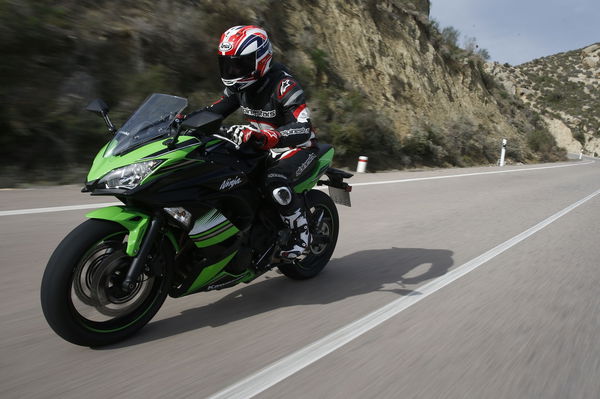First ride: Kawasaki Z900 review
The new Z900 needs to be an A* replacement for the popular Z800. Let’s see if it makes the grade
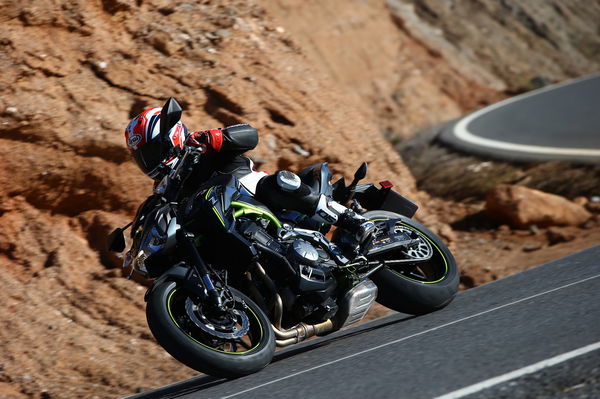
KAWASAKI'S naked Z-range is one of the pillars of the green brand from Japan-land.
It began in the early '70s when the mighty Z1 made its entrance and now one of the bastions of the range, the Z800 is being replaced by a new model – the Z900.
It’s got big shoes to fill - Kawasaki has shifted over 200,000 Z800s and its Z750 predecessor, although that also means the new Z900 has a lot of potential customers, which is why Kawasaki expects the Z900 to be its second biggest seller this year and it'll be offering demo rides here.

Power comes from a 948cc inline four-cylinder engine - it's dervied from the Z1000 and has a smaller bore size. It makes 125hp at 9,500rpm (12hp more than the Z800) and 72.72lb/ft torque at 7,700rpm. The engine is paired with a short ratio six-speed gearbox (the first five gears are short and sixth works almost like an overdrive) and has also been given a new slip assist and slipper clutch.
It weighs 210kgs and costs £8,249. If you’re in the market for middleweight naked like this, you might be eyeing the new Suzuki GSX-S750, which at £7,599 is less expensive and less powerful to the tune of 10hp, and the Yamaha MT-09, which costs £7,799 and makes 116hp. Or maybe you’re holding out for a new Triumph Street Triple, which starts from £8,000 and makes 113hp in base (S model) form.
Being bound by Euro4 regulations the Z900 sports the kind of bulbous exhaust silencer that’s bang on trend right now. It sounds as unremarkable as the silencer looks, but Kawasaki’s engineers have worked hard to compensate by inducing an angry induction note.
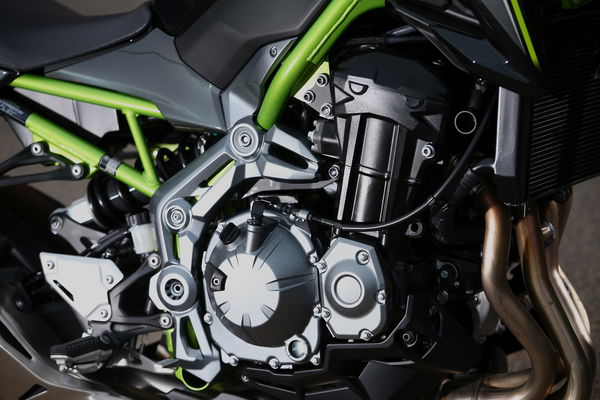
The Z900’s airbox has been designed with acoustic testing and sound research, and the result is an induction noise that becomes ever more furious as the revs climb and you flick up the faultless gearbox. Imagine the amplified sound of your jeans ripping when you sit down after one too many cakes and you’ve got a very poor idea of the Z900’s sound. The added aural attitude definitely gives the Z900 a necessary injection of character that works with the short ratio gearbox to create a bike that’s exciting to blast around on and beckons to the hooligan inside you.
Contrary to the increasingly manic noise spilling out from under the 17-litre tank, the Z900’s power is delivered smoothly and in a predictable fashion. Although not lacking midrange punch, the engine is at its most exciting once the motor is spinning faster and the digital rev counter is sitting between 7,000 and 10,000rpm. Power builds from around 5k, and once 7k arrives the engine pulls with more conviction before tailing off beyond 10,000rpm. The combination of short ratio gearbox and that induction noise means the Z900 delivers a visceral riding experience – one which it might not offer otherwise.
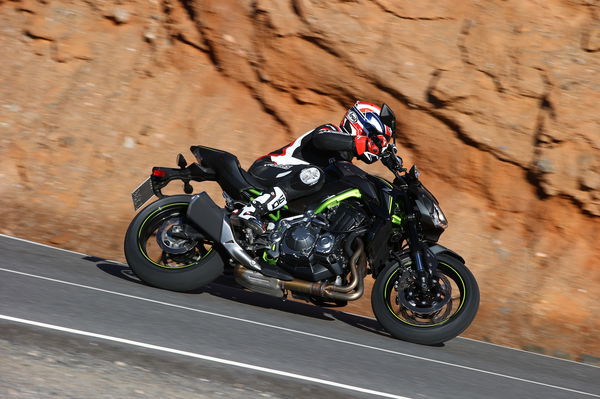
The engine’s attitude is met with light, effortless handling and a nice connection to the road courtesy of a new, lighter frame (which contributes to the Z900’s 21kg weight loss over the Z800), 41mm USD fork with rebound damping and preload adjustment and a horizontal back link shock with the same range of adjustment.
The standard suspension is pretty simple stuff and it works well. A tad more rebound damping might have made the fork feel a bit more refined for my weight but when it came to hurling the Z900 through a series of interlinked bends, the front was always stable and effortless.
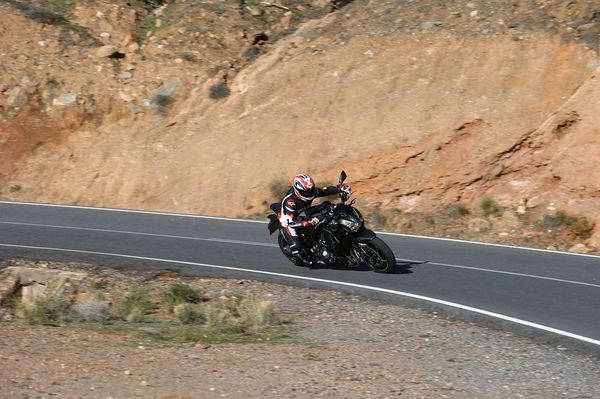
The rear was good too – comfortable over bumps and undulations and not saggy or bouncy. Although the shock performed well, it was consistently let down by the untrustworthy Dunlop Sportmax rear tyre which simply didn’t offer consistent-enough grip to properly match the willing chassis and suspension. It had no problem heating up but was prone to momentarily relinquishing grip when it shouldn’t have been anywhere near troubled, especially in slow corners when it could let go a little just as I was about to pick up the throttle exiting a bend. The front tyre didn’t do anything to cause concern and even when hauling the Z900 through a set of fast sweeping bends so good I had to ride them three times, it never felt like it was in danger of giving up. Undoubtedly, decent tyres would bring big benefits for the Z900.
Comfort and ergonomics follow suit – the bars are wide and really effective in tight stuff, so the Z900’s performance on really twisty roads is matched once back in a built-up area. The seat height is low at 795mm (the Z800’s is 834mm), so it’s super easy to manage if you’re lacking in the leg length department. I’m not tall and it fit me fine, with enough room between the seat and pegs to be comfortable over a day’s riding but I suspect that if you’re freakisly tall, it’s worth having a sit on one to see where your knees end up and whether it can accommodate your frame.
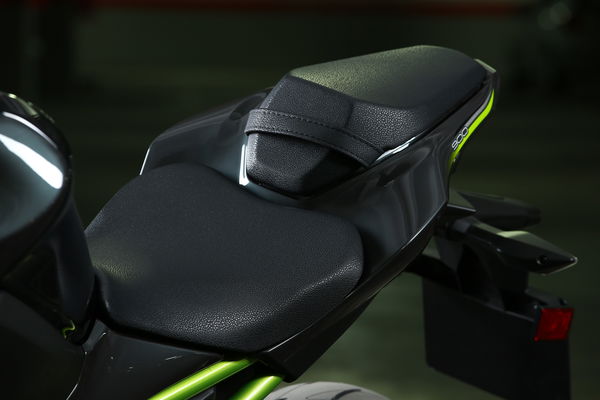
The seat was perfectly comfortable during the day-and-a-half I had on the Z900 but more importantly than that, it features a subtle crocodile skin print on it, so matched my pants and watch strap. Reach to the bars is comfortable and the tank narrows towards the seat so the Z900 is easy to move around on when you’re hustling it around.
Wind protection isn’t great – the front light unit directed wind blast up to my neck area but an aftermarket screen from Kawasaki will undoubtedly help with that but it’s not hard to hang on, even short bursts of 130mph (closed road, etc, etc).
And when it’s time to cut speed in rapid fashion, there's nothing flowery about the performance of the twin Nissin four-pots and semi-floating 300mm petals discs. They don’t have savage bite but ample power and good feel though the adjustable lever. If you wacked some better pads in there, they’d be ever better.
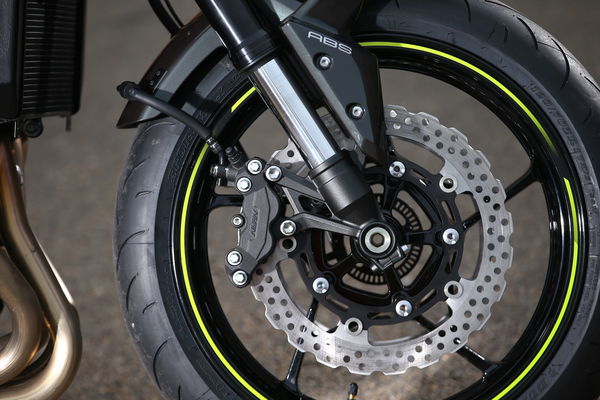
Minus the occasional irritating performance from the crappy rear Dunlop Sportmax rubber, the chassis, suspension, brakes and engine all work together to create a bike that handles effortlessly, and with a lightness that to look at, I wouldn’t have immediately thought it had.
Perhaps I’ve got it wrong; the seat unit kicks up and tapers in with purpose while the sculpted tank and small side cowlings look tough too. I think the rear three-quarter of the Z900 look right, so it must be the design of the headlight - to my eyes it just looks clumsy, a bit too snub nosed, almost drooping.
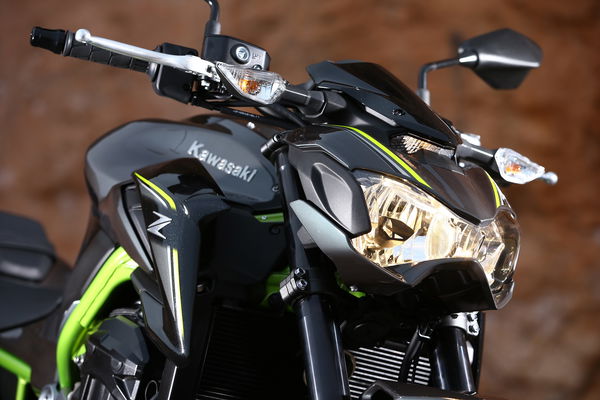
Kawasaki are really proud of the design of the Z900, they say it’s the result of their ‘Sugomi philosophy’, which is a match between engineering and styling and something that’s unique to them.
I don't buy it – ask Ducati how they style and design their bikes and they’ll talk about the same innate relationship between engineering and styling, without giving it a silly name and claiming their approach in unique. It feels like Kawasaki just wants to add more bullet points to the list of things to talk about when it comes to this bike…
… except they don’t need to because although the Z900 is a simple bike, it looks right, rides well and has a good engine and what it lacks in electronic riding aids, it makes up for with an uncluttered switchgear and get-on-and-go ride experience.
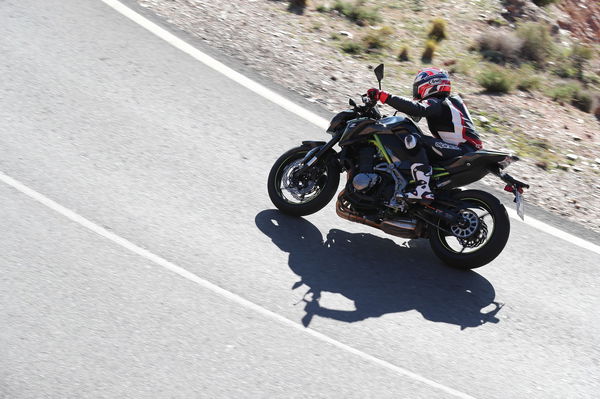
Having said that, the new Suzuki GSX-S750 and the 2017 Yamaha MT-09 both have traction control and if I was in the market for a super middleweight naked, I’d be looking at the ones with the most cutting edge technology, for less money.
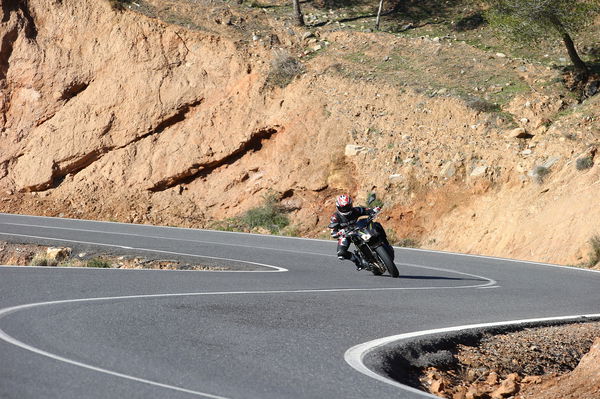
The Z900's LCD instrument panel is compact and unfussy. It features a gear position indicator and a shift light, and is perfectly readable. I wasn’t fond of the rev counter, which displays as a digital needle, but with the previous revs still visible on the display. I found it a little bit distracting to quickly see when riding at speed. The clocks can be moved up and down slightly up, although they’re not billed as being adjustable.
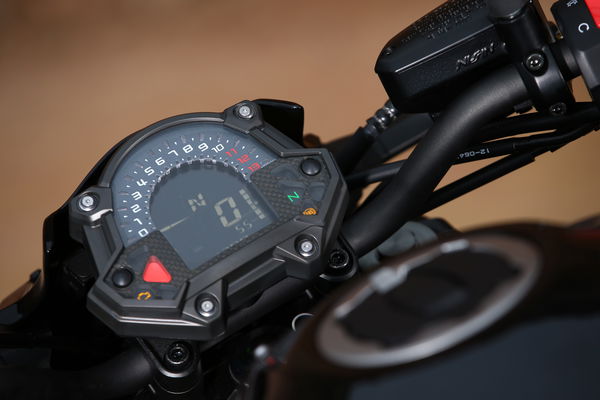
The moving clocks were the only are of questionable quality I could find on the Z900. Elsewhere, it seems unquestionably well made, with a high standard of finish, sharp graphics and good switches. The LED ’Z’ tail light is a nice touch too, and the adjustable brake and clutch levers are a welcome addition.
Without question, the new Z900 feels like a great replacement for the Z800. It's simple, light and effective, with smooth and exciting performance. It'll be interesting to find out how it stacks up against the competition.
Model tested: Kawasaki Z900
Price: £8,249
Engine: 948cc liquid-cooled inline four-cylinder DOHC 16-valve
Power: 125hp at 9,500rpm
Torque: 72.72lb/ft torque at 7,700rpm
Suspension: Front – 41mm USD fork with preload and rebound damping adjustment / Rear – Back link monoshock w preload and rebound damping adustment
Brakes: Front – Twin four-piston Nissin calipers and semi-floating 300mm petal discs / Rear – Single-piston Nissin caliper and single 250mm petal disc
Weight: 210kgs
Seat height: 795mm
Tank capacity: 17 litres
Colours: ‘Pearl Mystic Gray / Metallic Flat Spark Black’, ‘Candy Lime Green / Metallic Spark Black’, Metallic Flat Spark Black / Metallic Spark Black’ and ‘Candy Plasma Blue / Metallic Graphite Gray (Special Edition)’
Availability: Now
Photos: Doublered
Kawasaki Z900 Refined Raw demo
